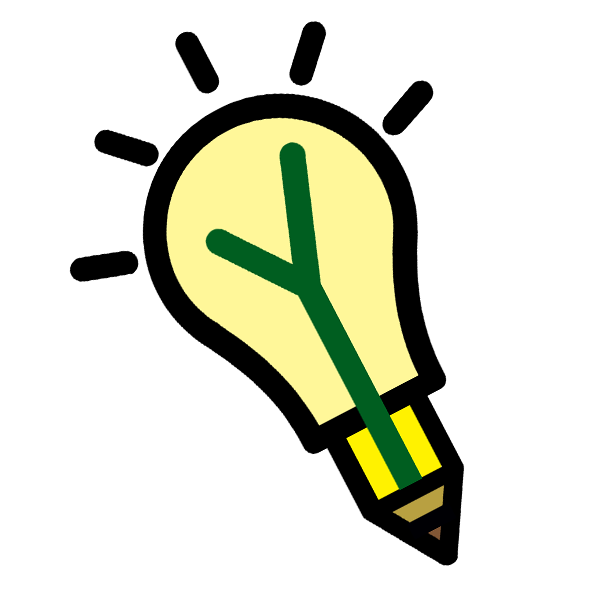
Overcoming Barriers
Combat writer’s block and diagnose other writing problems
Classroom Techniques For Overcoming Barriers To Writing
-

Overcoming Writer's Block
Identify practical and emotional causes, and learn techniques for troubleshooting them.
-

Diagnosing The Problem
Become a writing diagnostician, and focus your feedback for maximum efficiency.
-

Accommodating Disabilities
Approach each writer’s learning differences to determine practical needs you can meet.

What Causes These Barriers?
So many factors can interfere with writing.
Many are emotional and manifest as writer’s block. Others grow from language-based learning disabilities. Still others are rooted in a misunderstanding of the writing process.
The techniques below will help you work with students, giving them practical tools to conquer the barriers that stand in their way of success.
Overcoming Writer's Block
Alleviate writing-related fears and help students conquer a blank page.
Diagnosing Writing Problems
Help students understand why, exactly, their work is “awkward” or “unclear.” Identifying writing problems enables concrete solutions.
Common Process Problems
-
The Symptoms:
Expressions of nervousness or uncertainty about what to write
Underdeveloped ideas
Surface-level sloppiness
Repetition
A sense, as a reader, of being rushed through the ideas
Wordiness/ filling space meaninglessly
The Solutions:
More low-pressure free writing
Writing by hand
Discussion or So What game
Interim deadlines
Greater familiarity with a range of pre-writing techniques
Dictation in early stages of brainstorming
-
The Symptoms:
Not opening the computer or notebook to begin writing
Saying things like, “I just need to think a little more” or “I’m going to find some more sources first”
Crying
Expressing a helpless feeling
The Solutions:
Conversation before writing
Having someone else take notes on the conversation so the page isn’t blank
Writing by hand and transcribing to screen
-
The Symptoms:
Inability to finish work on time
A feeling of being “stuck” or “blocked”
Disliking the “sound” of one’s writing
Precisely written but very short drafts
Deleting sentences early in the writing process
The Solutions:
Writing in multiple stages
“Writing ugly” at first
Writing without deleting and without looking back at the draft
Using “placeholder” words rather than trying to find the perfect word in early drafts
-
The Symptoms:
Handing in a first draft as a final draft
Long-winded or diffuse drafts
Tangents
A final argument that differs from the argument stated at the outset
The Solutions:
Time management techniques to finish draft earlier
Fast, messy early draft writing
Printing draft to revise on hard copy
Practicing revision arts and crafts
-
The Symptoms:
Inability to get started
Expressing self-hatred or disgust with one’s writing
Repeatedly deleting everything and starting again
Changing topics frequently with the hope that a new topic will be better
The Solutions:
Recognizing that most or all writers feel insufficient much of the time
Explaining that the reader is genuinely interested in the student’s ideas and that they don’t need to pretend to be anyone they are not
Being locked into a topic at a certain point and not permitted to switch
Common Product Problems
-
The Symptoms:
Errors across a range of issues (punctuation, sentence structure, spelling, etc.)
The Solutions:
Lack of clarity on the ideas level. Go back to brainstorming before worrying about proofreading! If the ideas are clear, though, try to…
Check on process: is the student leaving time for proofreading steps?
If yes, try new or varied proofreading techniques
-
The Symptoms:
Errors that fall into a particular category or more than one category (consistent run-on sentences or missing apostrophes with general grammatical correctness otherwise)
The Solutions:
Grammar mandates
Specific rule review
Follow usage rather than grammar guidelines in those limited areas
-
The Symptoms:
Repetition
Multiple ideas in a single paragraph
Tangents or meandering
Disconnection among or within paragraphs
The Solutions:
Check on process: is the student trying to write straight through a single draft? Is so, recommend multiple, discrete steps
Revision arts and crafts
Pre-written outline that stays beside student during writing process
Reverse outline
Expand transitions from one-word to phrase-long
-
The Symptoms:
Assertions without proof
Repetition of central idea that doesn’t go further
The Solutions:
Read like a reader
Engage in imaginary or real debate on issue
Envision a critic’s response and address it in writing
Feel genuine interest in and passion for topic (or choose a new topic)
-
The Symptoms:
Argument is insufficiently bold and therefore does not require support
Argument is too bold and therefore lacks support
The Solutions:
“Three points” thesis-writing technique
Read like a reader
Hone thesis using subordinate clauses or through discussion and debate
Helping Students with Learning Disabilities
Needs and accommodations are not restricted to students with diagnosed disabilities.
Personalize your approach and collaborate with your students to help them achieve their learning goals.
Common Needs And Possible Accommodations
-
Accommodations:
Audiobooks
Ruler for reading
Index card with slit
-
Accommodations:
Creative proofreading techniques
Allowing for certain kinds of outside help with issues like spelling
-
Accommodations:
Allow technology for certain students even if technology is not generally permitted
Permit technology for all and find ways to avoid distraction (internet blockers, screens flat on desks, screen checks)
-
Accommodations:
Fidget toys, silly putty, magnets, or paper clips
Chewing gum or snacks
Coloring books
Online coloring or doodling apps
Standing or pacing in the back of the room
-
Accommodations:
Dictation and transcription
Conversations or So What? game
Sitting beside you to free write (to increase focus)
Sharing an assignment individually in advance of sharing it with the class
-
Accommodations:
Extra time to read with established interim deadlines
Extra time to write with established interim deadlines
Avoid assigning high-stakes in-class writing
-
Accommodations:
Work on an outline together
Work on color coding together
Cut up student writing and ask student to reassemble in new order
Review and comment on bullet point list
-
Accommodations:
Omit grades on individual essays and only assign semester or portfolio grades
Allow for additional drafts or revisions
Sit with students as they write to offer words of encouragement
Provide frequent check-ins without judgment or criticism
How To Determine Practical Needs You Can Meet
Consider your course goals, and assess if they can be met with a reasonable accommodation.
Recognize opportunities to nurture students’ independent skills so they succeed beyond your classroom.
Ask students what they need, and partner with them to achieve their goals.




